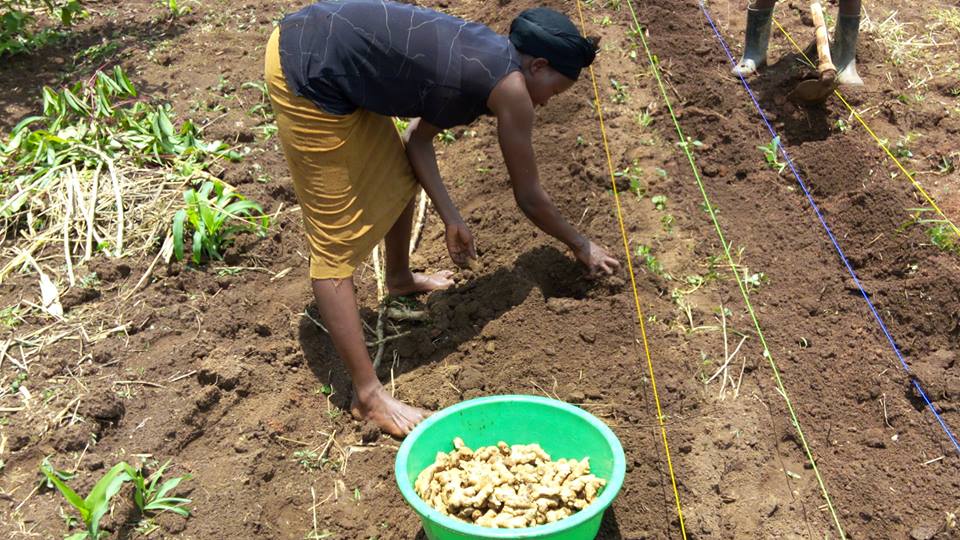 Farmer sowing ginger. An acre requires 3 to 6 lorries or supply of 50kg of compost coffee husks manure to grow the crop for better yields. Photo: Greening Uganda Facebook.
Farmer sowing ginger. An acre requires 3 to 6 lorries or supply of 50kg of compost coffee husks manure to grow the crop for better yields. Photo: Greening Uganda Facebook.
Farmers growing ginger can improve the crop’s yields by up to 30 per cent using compost coffee husks manure as opposed to original coffee husks and some bio-organic fertilizers on the agriculture market. This is because the husks are rich in lignocelluloses materials, which makes it an ideal substrate for microbial processes in the soil that stimulates crop growth.
For composition, coffee husk supplemented with cow manure, urea and phosphorus are mixed then left to compost for some time then applied before planting.
They are spread out evenly in the whole field. An acre can take about 3 to 6 lorries or a supply of 50kg. To plant an acre of Ginger, you will need 9-10 bags that is approximately 1 ton of rhizomes.
RELATED CONTENT: Exporter looking for ginger, garlic, okra, pumpkin for its growing markets
Planting the rhizomes
Ginger is propagated by dividing the root stock or rhizomes. Seeds are planted 30cm from each other in drills in the field spaced by 60cm.
Harvesting and possible returns
A maturity crop shows yellowing of the aerial parts and withering. The top part finally dries off and falls to the ground. It is advisable to leave the crop unharvested for the first year and it sprouts again and is harvested at the second year. This way, the yields increase.
With good farming practices, management & Care, an acre of Ginger will yield up to 10 tons. With good prices, in an acre you can earn Sh60,000,000.
Harvesting is done by uprooting the whole plant. The yields depend on many factors like fertility of the soils, supply of rains, and others but if all goes well, an acre can produce about 2 to 8 tons.
If a kilogram is sold at Sh8,000 at the field, a single ton can fetch sh8,000,000.
RELATED CONTENT: Organic fertiliser triples Kitale farmer\'s watermelon yield
Integrated pest & disease management for ginger
Field hygiene is more important to manage the pests and diseases. Avoid water stagnation, provide adequate drainage, remove weeds periodically, apply only well-rotted FYM compost at 25 tonnes hectares and thoroughly incorporate it in the soil, apply dolomite at 2 tonnes hectares before sowing to increase soil pH.
Sow ginger in raised beds of at least 25-30 cm height and provide mulching with leaves and twigs of Eupatorium sp or Alnus nepalensis or mustard oil cake at 5 to 10 tonnes hectares and follow crop rotation of 2 to 4 years depending on the incidence and severity of the diseases.
RELATED CONTENT: Understanding organic fertilisers
















Comments powered by CComment